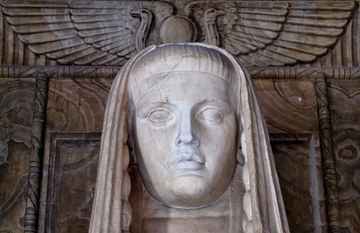8.4. Plotting individual paths¶
Data, Path, and the various path-like objects
can all be plotted using a very consistent interface. This is made
possible due to two attributes which are inherited by every object from
the base class – data and plottable.
The data attribute points to the Data object which is used to
provide parameters for the Fourier transforms. For a data object, this
attribute points to itself. For example, to change the lower bound of
the Fourier transform range, you are able to do something like this:
$any_plottable_object -> data -> kmin(3);
That construct is guaranteed to do what you want for any Data, Path or path-like object.
The plottable attribute is boolean and is used to distinguish Data,
Path, and path-like objects from other object types in the DEMETER
system. Trying to plot something that cannot be plotted, like the sample
below, will trigger an error and probably cause your program to exit,
but it certainly will not behave in some strange and unexpected manner.
## this will trigger an error:
$gds_object -> plot('k');
ScatteringPath objects are not plottable objects (and, so, have their
plottable set to 0). To visualize the contribution from the
scattering geometry described by a ScatteringPath object, you must
create a Path object. Revisiting the example of plotting the first few
paths in a FEFF calculation:
1 2 3 4 5 6 7 8 9 10 11 12 13 14 15 16 17 18 19 | #!/usr/bin/perl
use Demeter;
my $data = Demeter::Data::Prj -> new("athena.prj") -> record(3);
my $feff = Demeter::Feff -> new(file => "feff/feff.inp");
$feff -> set(workspace => "feff/", screen => 0,);
$feff -> potph;
$feff -> pathfinder;
my @list_of_paths = @{ $feff-> pathlist };
my @paths;
foreach (@list_of_paths[0..5]) {
push @paths, Demeter::Path->new(parent => $feff,
data => $data,
sp => $_);
};
## plot data and paths together in R space
$_ -> plot('r') foreach ($data, @paths);
|
Data is imported from an ATHENA project file at line 4 (using chained method calls!) and a FEFF calculation is made between lines 6 and 9. Path objects are created at lines 14 to 16 in a loop over the first few ScatteringPath objects from the FEFF calculation. Finally at line 19, everything is plotted in R space.
Note that the syntax for plotting Data and Path objects is identical. Of course, different things are required to get Data and Path objects ready to be plotted, but those interface details are handled by DEMETER. For the programmer, the chore is easy.
DEMETER is copyright © 2009-2016 Bruce Ravel – This document is copyright © 2016 Bruce Ravel
This document is licensed under The Creative Commons Attribution-ShareAlike License.
If DEMETER and this document are useful to you, please consider supporting The Creative Commons.
